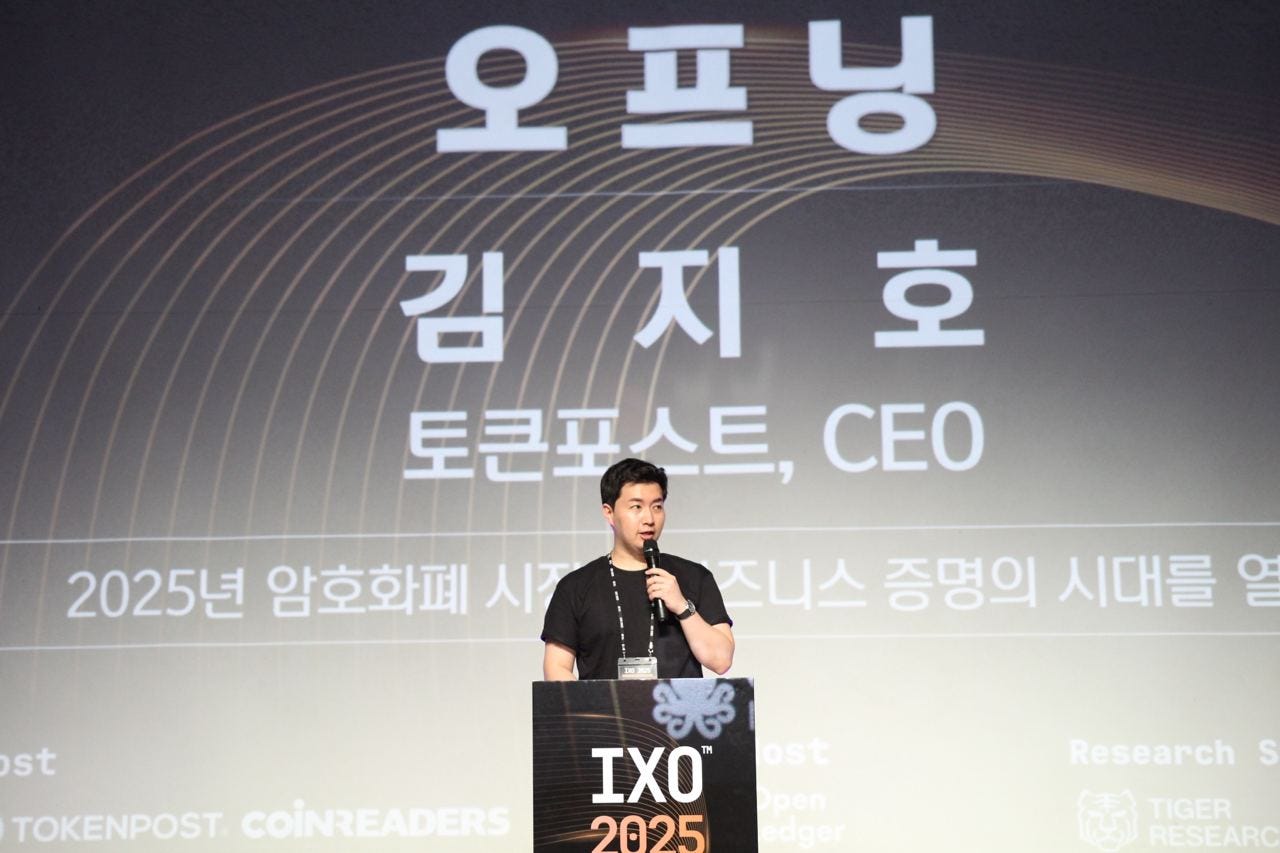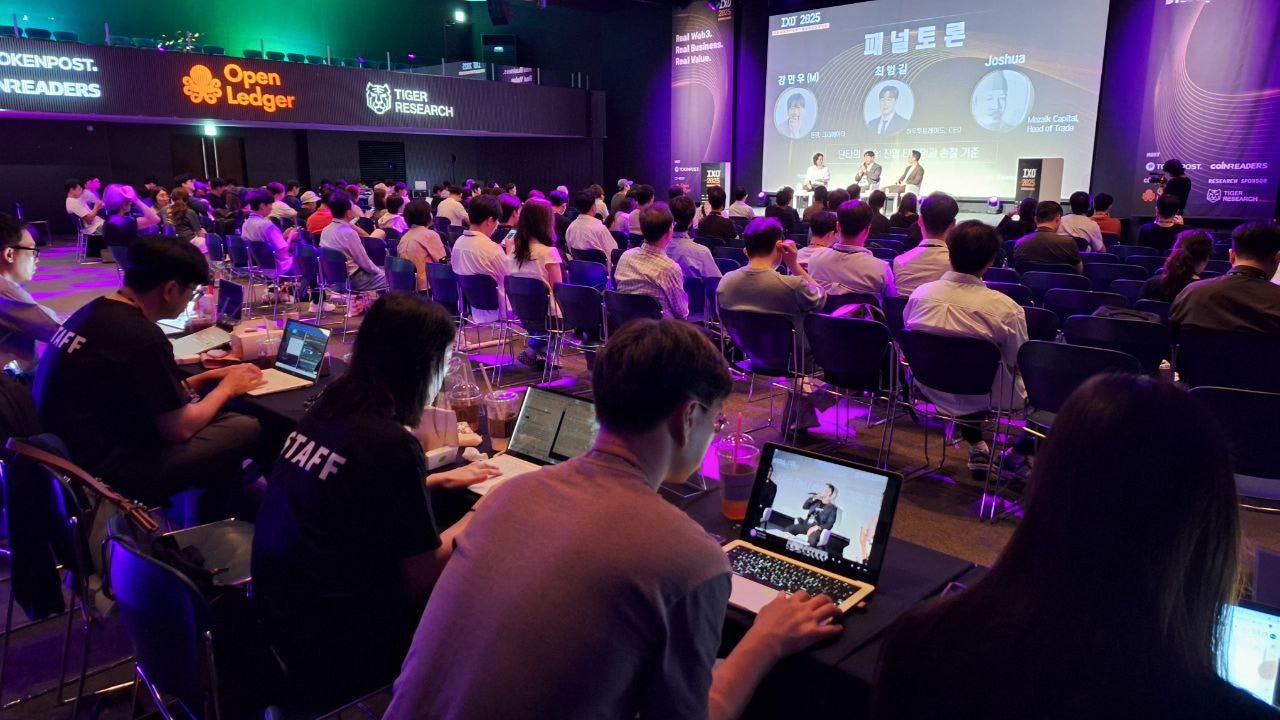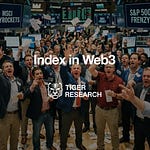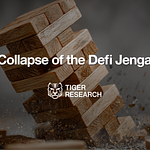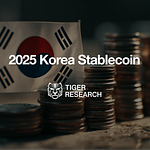This report was written by Tiger Research, analyzing Korean users’ onchain activity across Ethereum, Base, and Solana ecosystems during H1 2025.
TL;DR
Korean crypto users expanded beyond centralized exchanges during H1 2025. They moved into on-chain ecosystems. This shift signals market maturation and diversified user engagement.
Korean Ethereum users hold larger assets and participate consistently. Base users gradually increase their participation through dApp. Solana attracts the most users with high activity levels. However, users experience fatigue from short-term events like meme coins and launchpads. This leads to significant user attrition.
Korean crypto users show different behaviors on each blockchain. They cannot be grouped by one trait. Projects need systematic segmentation for effective market strategies. This segmentation combines qualitative and quantitative analysis.
1. Korean On-Chain User Activity in H1 2025
Korean users expanded their activities beyond exchanges like Upbit and Bithumb as outlined in previous on-chain odyssey reports. This represents important market maturation rather than a temporary phenomenon.
Korea has high centralized exchange trading volumes. On-chain activities grow rapidly and create multi-layered market structures. Defining Korea solely as an exchange-centric market no longer explains reality. Overlooking this trend limits market entry strategies to superficial levels.
The IXO 2025 event on January 24-25 confirmed this market shift. TokenPost and CoinReaders co-hosted the event. Kim Ji-ho, CEO of TokenPost, stated during the opening ceremony that Korean digital asset investors exceed 10 million. The crypto market now connects with mainstream audiences beyond niche technology communities.
International attendees sought deeper understanding of Korean on-chain user participation. They moved beyond viewing Korea as an exchange-centric structure. However, analyzing Korean user characteristics remains challenging. Securing related on-chain data systematically is difficult.
This report addresses these needs. It collected on-chain activities from approximately 80,000 wallets. The analysis targets readers requiring deeper Korean market understanding after the event. The study covers H1 2025 data. It examines Korean user behavior patterns across three ecosystems. These include Ethereum, Base, and Solana. This provides practical insights for global projects considering Korean market entry.
2. Korean User Characteristics: Ethereum, Base, and Solana
2.1. Activity Hours
Ethereum, Base: Regular activity hours (9 AM to 11 PM)
Solana: Early morning hours (midnight to 8 AM)
Korean users show different on-chain participation patterns across blockchains. Activity hours reveal distinct differences. Ethereum and Base users concentrate transactions between 9 AM and 11 PM during regular activity hours.
Solana shows consistent transactions from midnight to 8 AM during early hours. Users remain active during sleep hours. This creates a clear contrast with other chains. This occurs because Solana forms a trading-centric ecosystem. Major token launches and events align with North American time zones. Korean users actively participate during early morning hours to match these global schedules.
This demonstrates Korean users' high global market adaptability. It reflects active investment tendencies that go beyond time zone adjustments. Users avoid missing global opportunities. Korean users act beyond regional limitations. They align with global crypto ecosystem rhythms.
2.2. Balance Distribution
Balance distribution varies significantly across blockchains. Korean users on Ethereum hold approximately $400 million in total assets based on collected wallets. This reaches 9 times the combined total of Base and Solana. High-value wallets drive this difference rather than wallet quantity. Whales (over $1 million) and sharks (over $100,000) account for a large proportion. Ethereum hosts 116 whale wallets holding over $1 million each. These wallets average $2.5 million in holdings.
Solana shows a different pattern. Shrimp wallets (under $100) comprise 99.9% of all wallets. Average holdings reach only $30. However, a few whale wallets hold over $8 million on average. This creates the most extreme balance distribution polarization.
These figures suggest Korean users show different investment tendencies across chains. Ethereum attracts conservative large investors who prioritize stability. Solana hosts large investors expecting high returns and small investors targeting short-term opportunities like meme coins and launchpads. Base attracts moderate investors between these extremes. This shows the Korean market hosts diverse user groups with various purposes and approaches rather than concentrating on specific investment tendencies.
2.3. User Activity Trends
Ethereum shows stable transaction volumes regardless of market fluctuations or external events. Korean users focus on utility-driven activities within the Ethereum ecosystem. They engage more in practical dApp usage, custody, and governance participation rather than DeFi-centered trading.
Unlike Ethereum, Base and Solana transactions react sensitively to overall crypto market sentiment and short-term events. Transactions surged with early-year crypto price increases. They declined temporarily and rose again when Bitcoin broke $100k in May.
The two chains showed similar transaction trends but differ in daily active users. Solana experiences frequent user attrition due to meme coin launchpads and short-term event structures. Base has fewer absolute users but shows steady growth in active users. This growth stems from diverse dApp and consumer service adoption.
2.4. Application Usage
These participation differences become clear through applications Korean users use on each chain.
Solana maintains a trading-centric ecosystem. Korean users concentrate on DeFi trading. Stablecoin utilization remains low. SOL pair-based trading dominates activities.
Ethereum and Base show active remittance and deposit activities. Users utilize USDT or USDC for these activities. Diverse practical usage foundations exist on these chains. Kaito's InfoFi service drives major user acquisition on Base. The application ranks third on Base currently. Korean users actively respond to reward structures. These structures provide benefits through token staking and incentive claims.
3. Closing Thoughts
This analysis examined on-chain activities of approximately 80,000 Korean crypto users. It provides comprehensive understanding beyond simple user metrics. This analysis enables more effective GTM strategy development. It builds on deep user insights.
The most important finding shows Korean users cannot be viewed as one homogeneous group. They share high cryptocurrency market understanding compared to other markets. Korean user characteristics fall into three main areas.
First, Korean users demonstrate excellent global market adaptability. Early morning activities on Solana show active engagement. This goes beyond simple time zone adjustments. Users avoid missing global opportunities. They act beyond regional limitations. They align with global crypto ecosystem rhythms.
Second, chain-specific strategies and investment tendencies show clear differentiation. The same Korean users act as conservative investors on Ethereum. They prioritize stability there. They become speculative investors on Solana. They seek high returns there. They show moderate tendencies on Base. This strategic differentiation leads to hierarchical segmentation. Investment purposes and risk preferences drive this segmentation. Users optimize participation strategies for each ecosystem. They match each ecosystem's characteristics and culture. This shows Korean users form a complex group. They are not a singular entity.
Third, users show high interest in incentive-based services. They participate actively in these services. Kaito's rapid rise on Base demonstrates this trend. Korean users actively participate in revenue generation. They use token staking and reward systems. On-chain data confirms this trend. Kaito displays Korean users separately on leaderboards. Some projects expand reward pools. They target Koreans specifically. These examples validate this observation.
Global projects considering Korean market entry need tailored strategies. These should match user characteristics. Korea represents a balanced market. It shows no bias toward specific stages or types. This creates high entry value.
Strategy development should prioritize blockchain selection. This depends on target user segments. Korean users on each chain show different expectations. Their behaviors vary distinctly.
Operationally, providing services based on North American time zones poses no major issues. Global operational systems may not be immediately necessary. They can be included in long-term expansion plans.
User acquisition and retention require clear incentive structures. These must be sustainable. Korean users show high sensitivity to token staking. They respond to reward systems. They respond more positively to long-term participation structures. Short-term events are less effective.
Most importantly, these users should be recognized as partners. They help develop ecosystems. They are not simple users. This report aims to provide practical assistance. It supports such strategy development.
🐯 More from Tiger Research
Read more reports related to this research.Disclaimer
This report has been prepared based on materials believed to be reliable. However, we do not expressly or impliedly warrant the accuracy, completeness, and suitability of the information. We disclaim any liability for any losses arising from the use of this report or its contents. The conclusions and recommendations in this report are based on information available at the time of preparation and are subject to change without notice. All projects, estimates, forecasts, objectives, opinions, and views expressed in this report are subject to change without notice and may differ from or be contrary to the opinions of others or other organizations.
This document is for informational purposes only and should not be considered legal, business, investment, or tax advice. Any references to securities or digital assets are for illustrative purposes only and do not constitute an investment recommendation or an offer to provide investment advisory services. This material is not directed at investors or potential investors.
Terms of Usage
Tiger Research allows the fair use of its reports. ‘Fair use’ is a principle that broadly permits the use of specific content for public interest purposes, as long as it doesn't harm the commercial value of the material. If the use aligns with the purpose of fair use, the reports can be utilized without prior permission. However, when citing Tiger Research's reports, it is mandatory to 1) clearly state 'Tiger Research' as the source, 2) include the Tiger Research logo. If the material is to be restructured and published, separate negotiations are required. Unauthorized use of the reports may result in legal action.


